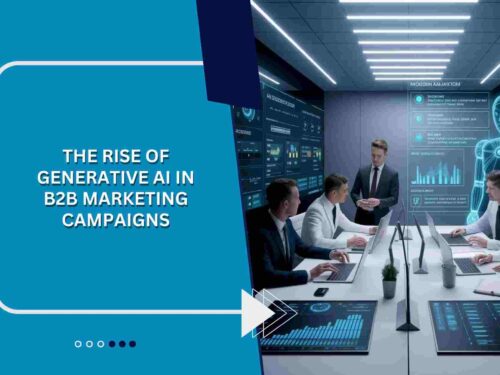In today’s highly competitive B2B ecosystem, generalized marketing approaches simply don’t work. Every business has unique needs, challenges, and goals. This makes it essential for marketers to focus on B2B Market Segmentation as a strategic foundation. Rather than treating your audience as one large pool, segmentation helps divide business customers into meaningful, manageable groups. These segments allow you to create customized strategies that resonate better and convert faster.
Why B2B Market Segmentation Matters in 2025
B2B buyers are more informed, more selective, and more empowered than ever before. They expect relevant, timely communication and personalized solutions. Businesses that implement effective B2B Market Segmentation gain a powerful edge they deliver the right message to the right audience at the right time. This relevance not only improves engagement rates but also leads to better-qualified leads, shorter sales cycles, and improved ROI.
Moreover, B2B Market Segmentation is essential for aligning marketing and sales teams. With clearly defined customer groups, both teams can focus on shared goals, understand buyer intent, and prioritize high-value accounts that are most likely to convert. It ensures that no time or budget is wasted on unqualified leads or misaligned outreach.
Core Concepts Behind B2B Market Segmentation
At its core, B2B Market Segmentation is about organizing your total addressable market into smaller categories based on shared characteristics. These characteristics go far beyond basic demographics. They can include industry, company size, purchase behavior, geographic location, technology usage, and much more.
Each segment should represent a unique opportunity with similar needs, behaviors, or challenges. The goal is to understand these groups well enough that your messaging, product offers, and sales strategies feel like a perfect fit. Instead of one-size-fits-all marketing, segmentation lets you speak the language your audience understands—literally and strategically.
Firmographic Segmentation Explained
One of the most common forms of B2B Market Segmentation is firmographic segmentation. This method involves grouping companies based on objective business data such as industry type, number of employees, annual revenue, and company structure. For example, a SaaS provider offering enterprise workflow automation tools would find more relevance targeting large multinational corporations rather than small startups with limited budgets.
Firmographic data is relatively easy to access through databases, directories, and professional platforms. It acts as a great starting point for building account lists, prioritizing leads, and tailoring value propositions. The broader business landscape can be quickly mapped out using these variables, giving your team clear insights into who to target and how.
Understanding Technographic Segmentation
In the digital age, technology plays a crucial role in business operations. Technographic segmentation dives into the tools and platforms a company uses. From CRMs to cloud storage, and marketing automation tools to analytics platforms knowing your prospect’s tech stack can provide a massive advantage.
For instance, if your product integrates with Salesforce, then companies already using Salesforce should be part of your high-priority segment. Technographic segmentation enables a contextualized sales pitch that aligns your solution with the prospect’s existing technology environment. This reduces friction in the buying process and increases chances of conversion.
Behavioral Segmentation in the B2B Space
Another essential layer in B2B Market Segmentation is behavioral segmentation. This involves analyzing how businesses interact with your brand across various channels. These behaviors can include visiting your website, opening emails, downloading whitepapers, attending webinars, or engaging on social media.
Behavioral insights allow marketers to gauge where a prospect is in their buying journey. Are they in the awareness stage, or are they evaluating vendors? Understanding this helps deliver more appropriate and timely content that nudges them toward conversion. Behavioral segmentation also aids in lead scoring and nurturing workflows, allowing automation platforms to adapt messaging based on actions.
Needs-Based Segmentation for Deeper Personalization
Needs-based segmentation goes beyond observable traits and behaviors. It focuses on the underlying needs, pain points, and motivations that drive purchasing decisions. This type of B2B Market Segmentation requires deeper research, often involving customer interviews, surveys, or feedback analysis.
By identifying what problems a segment is trying to solve, you can customize your messaging and product positioning to meet those specific challenges. For instance, one segment may value speed and automation, while another may prioritize data security and compliance. Speaking to these unique needs creates stronger trust and makes your solution feel tailor-made.
Value-Based Segmentation for Revenue Optimization
Value-based segmentation ranks customer segments based on their potential profitability. Some clients may bring large, recurring revenue and long-term contracts, while others may make smaller, one-time purchases. By assigning a value score to each segment, you can prioritize your sales and marketing efforts toward high-value accounts.
This is particularly useful in account-based marketing strategies, where resources are concentrated on fewer, more lucrative opportunities. Value-based B2B Market Segmentation ensures that your best offers, campaigns, and outreach are focused where they will have the highest return.
The Strategic Framework: TAM, SAM, and ICP
An effective segmentation strategy begins with understanding three key concepts Total Addressable Market (TAM), Serviceable Available Market (SAM), and Ideal Customer Profile (ICP).
The Total Addressable Market includes all businesses that could possibly use your product or service. It’s the broadest view of opportunity but is often too large and diverse for practical targeting. The Serviceable Available Market narrows this down to companies you can realistically reach based on your current capabilities, channels, and geography. Finally, the Ideal Customer Profile is a detailed description of the company that’s most likely to benefit from your solution and bring you the most value. It is your best-fit customer, defined by a combination of firmographics, behavior, needs, and budget.
By aligning segmentation within this framework, B2B organizations can structure their go-to-market strategies more effectively. It ensures resources are directed toward the right targets and supports long-term scalability.
Data Sources That Power Effective Segmentation
To build accurate and actionable segments, access to high-quality data is critical. Internal CRM systems, website analytics, customer support logs, sales feedback, and third-party databases all contribute to a clearer understanding of your audience.
AI-powered tools and intent data platforms can add an additional layer by identifying buyer intent signals. These tools track digital footprints across multiple channels to highlight accounts that are actively researching solutions in your category. Combining these insights with traditional segmentation models boosts precision and timing.
Key Benefits of B2B Market Segmentation
The advantages of implementing a well-defined B2B Market Segmentation strategy are both immediate and long-term. It not only helps in understanding and organizing your audience but also enhances campaign precision and business profitability. When you know exactly who you’re targeting, your message becomes clearer, and your conversions become more predictable.
Here are some of the most impactful benefits:
- Increased marketing ROI by reducing wasted spend on irrelevant leads
- Higher engagement rates through personalized content and messaging
- Improved lead scoring and prioritization in CRM and automation systems
- Better alignment between sales and marketing teams for unified targeting
- Stronger customer retention due to solutions tailored to specific needs
Aligning Sales and Marketing Through Segmentation
A successful B2B Market Segmentation strategy bridges the gap between sales and marketing. When both teams work from the same segmentation model, they share a unified vision of the target customer. Marketing campaigns become more relevant, while sales conversations become more contextual and effective.
Segmentation enables both teams to coordinate on messaging, prioritize accounts, and create seamless experiences across the entire buyer journey. When segmentation drives the strategy, pipeline growth becomes more predictable, and customer acquisition costs decrease significantly.
Common Pitfalls to Avoid in B2B Market Segmentation
While segmentation brings immense value, poor execution can lead to missed opportunities. One common mistake is using outdated or incorrect data, which results in targeting the wrong businesses. Over-segmentation is another issue it can create complexity and confusion within your strategy.
Businesses should also avoid relying on a single segmentation method. A hybrid approach that combines firmographic, behavioral, and needs-based data often delivers the best results. Additionally, it’s important to revisit and revise your segments regularly as market conditions, technologies, and customer behaviors evolve.
If you’re ready to transform your marketing and sales outcomes through high-impact segmentation strategies, Acceligize can help you get there. With advanced data intelligence, ABM solutions, and demand generation strategies, we empower B2B brands to unlock their highest growth potential.




